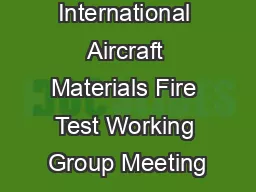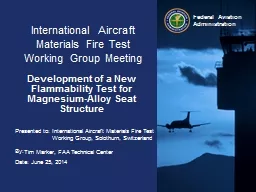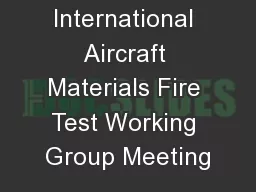PPT-International Aircraft Materials Fire Test Working Group Meeting
Author : natalia-silvester | Published Date : 2019-01-20
Restraining Leather Cushions for the Seat Oil Burner Test International Aircraft Materials Fire Test Working Group Tim Salter FAA Technical Center June 2526 2014
Presentation Embed Code
Download Presentation
Download Presentation The PPT/PDF document "International Aircraft Materials Fire Te..." is the property of its rightful owner. Permission is granted to download and print the materials on this website for personal, non-commercial use only, and to display it on your personal computer provided you do not modify the materials and that you retain all copyright notices contained in the materials. By downloading content from our website, you accept the terms of this agreement.
International Aircraft Materials Fire Test Working Group Meeting: Transcript
Download Rules Of Document
"International Aircraft Materials Fire Test Working Group Meeting"The content belongs to its owner. You may download and print it for personal use, without modification, and keep all copyright notices. By downloading, you agree to these terms.
Related Documents














